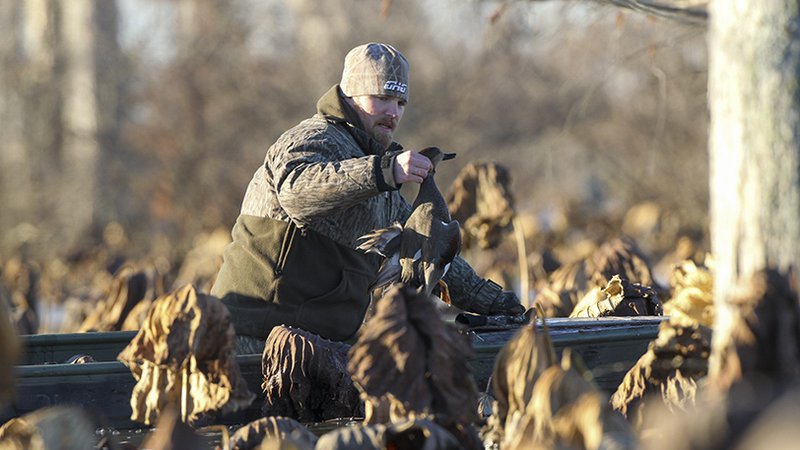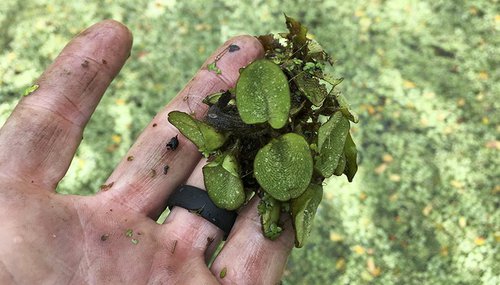Hunters urged to clean, drain and dry during duck season
ON 11-06-2019

Nov. 6, 2019
Randy Zellers
Assistant Chief of Communications
LITTLE ROCK – As waterfowl hunters across Arkansas continue to pace the floor waiting for the opening day of duck season, the Arkansas Game and Fish Commission would like to remind them to keep it clean this year, and if you can, keep it drained and dry, too.
Clean, drain and dry is the motto of many fisheries professionals working to keep invasive plants from attacking our waters and making them inaccessible to both fishing and hunting boats. Some invasive plants, such as hyacinth and giant salvinia can grow so thick, they can bog down even a muscled up mud motor and choke out all the beneficial, seed-producing plants waterfowl eat.
The best way to stop these plants from taking over is to prevent them from being carried to new bodies of water on fishing, boating and hunting equipment. As trailers are pulled from the water and decoys are stowed, they may be harboring a few stowaways in the form of seeds and pieces of the plants that can regenerate when placed in new waters.
Jimmy Barnett, the AGFC’s aquatic nuisance species coordinator and an avid duck hunter, says he knows hunters have to stay mobile to cash in on flights of ducks as they make their way through the state. This nomadic trait makes duck boats and duck equipment the perfect distribution system for unwanted exotic species.
“When rivers begin to flood, ducks move around to access new food sources and hunters follow,” Barnett said. “Anything they carry and use in the water could be a pathway for invasive species like zebra mussels and exotic vegetation.”
Some giant salvinia sightings in Texas have been noted in areas which are not necessarily fishing locations, but are popular with duck hunters.

“We just want to make everyone aware of the dangers these species can cause, not only on the habitats that ducks and fish are using, but to the budgets of fish and wildlife agencies fighting their spread,” Barnett said. “Louisiana spends millions each year to spray aquatic nuisance vegetation to keep access open in many lakes and bayous. That’s money that could be spent on habitat management or increasing public access.”
Hunters can help prevent the spread of aquatic nuisance species by following the three-step process of clean, drain and dry anytime they move to new water:
- Clean all equipment – Remove all plants and pieces of vegetation, seeds and mud off your waders, decoys, boat, truck, blind and trailer.
- Drain your boat – Remove the drain plug from your boat when you leave the water.
- Dry – Let all gear dry for at least five days before visiting new waters. If drying is not an option, spray all equipment with a high-pressure hose or hot water.
Visit www.cleandraindry.org for more information about invasive species and what hunters can do to help.
Recent News

Arkansas Wildlife Weekly Fishing Report
Jul. 10, 2025

Lonoke aquaculturist named to AGFC
Jul. 10, 2025
Subscribe to Our Weekly Newsletter E-mails
Don’t miss another issue. Sign up now to receive the AGFC Wildlife Weekly Newsletter in your mailbox every Wednesday afternoon (Waterfowl Reports are published weekly during waterfowl season and periodically outside the season). Fishing Reports arrive on Thursdays. Fill in the following fields and hit submit. Thanks, and welcome!
